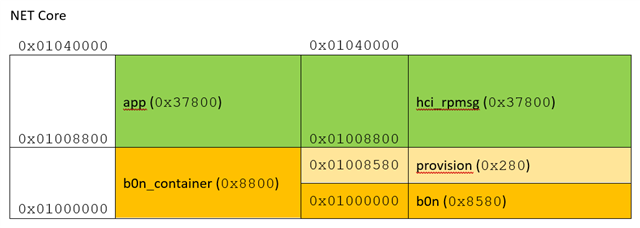Hi, I want to create a partition setup (for the nRF5340) which I can use with future versions of the nRF Connect SDK, which means future versions of mcuboot and b0n. If we produce PCB's in the future with a new version of mcuboot and/or b0n, the APP core and NET core binaries of new software releases shall be able to run on new systems as well as old systems with outdated mcuboot and/or b0n. Further, we plan to add OTA update features to future software versions, in a way that we can update our devices in the field later via wire and add OTA functionality to them.
Currently, the build system (SDK & toolchain v2.5.3) creates the following partition manager configuration, which I use as basis for my pm_static.yml:


- Should I increase the sizes for b0n and/or mcuboot? How to optimize b0n partition size vs. hci_rpmsg partition size?
- What is this procision partition next to b0n (within a b0n page?!) Is the size large enough for future extensions?
By the way, the hci_rpmsg section is pretty full aalready (>80%). I hope there is enough space left for future SDK versions and small extensions I plan to implement within the NET core.
One more question concerning the NET core: I read somewhere in the mcuboot documentation that the NET core must be updated when the Bluetooth configuration changes. Does this mean the NET core binary is affected by me characteristic and service definitions in the APP core's implementation?
Best regards,
Michael
